
These 11 Irish castles showcase the dramatic beauty of historic Ireland
TripFalcon October 04, 2020
Last Update: 2020-10-04 04:55:14From brooding ruins on windswept hills to restored masterpieces, Ireland’s castles can be looked at, walked through, clambered over, dined in – and even slept in! With around 3000 castles spread across the country, you'll be spoiled for choice if you decide to check out a few. Here are 11 of our favorites.
1. Kilkenny Castle
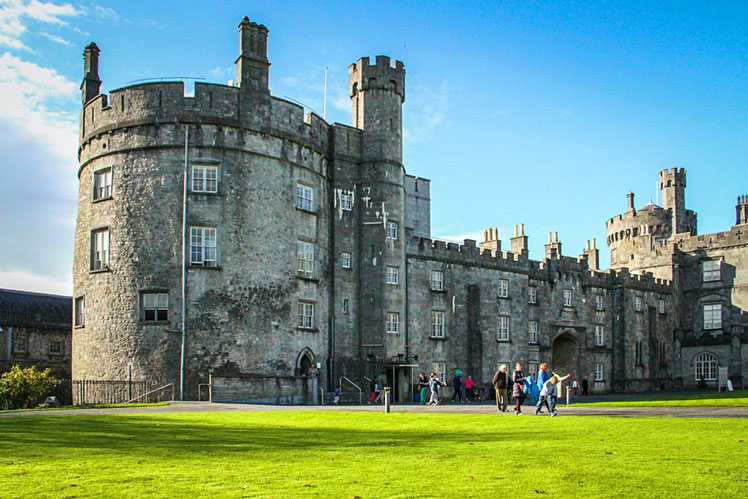
Kilkenny Castle is one of Ireland’s most visited heritage sites © RobinsonBecquart/Getty Images
Kilkenny Castle rises above the River Nore in Kilkenny and is one of Ireland’s most visited heritage sites. Stronghold of the powerful Butler family, it has a history dating back to the 12th century, though much of its present look dates from Victorian times. The first structure on this strategic site was a wooden tower built in 1172 by Richard Fitz Gilbert de Clare, the Anglo-Norman conqueror of Ireland better known as Strongbow.
In 1192, Strongbow's son-in-law, William Marshal, erected a stone castle with four towers, three of which still survive. The castle was bought by the powerful Butler family (later earls and dukes of Ormonde) in 1391, and their descendants continued to live here until 1935. Maintaining the castle became such a financial strain that most of the furnishings were sold at auction. The property was handed over to the city in 1967 for the princely sum of 50 Irish punts.
2. Dublin Castle
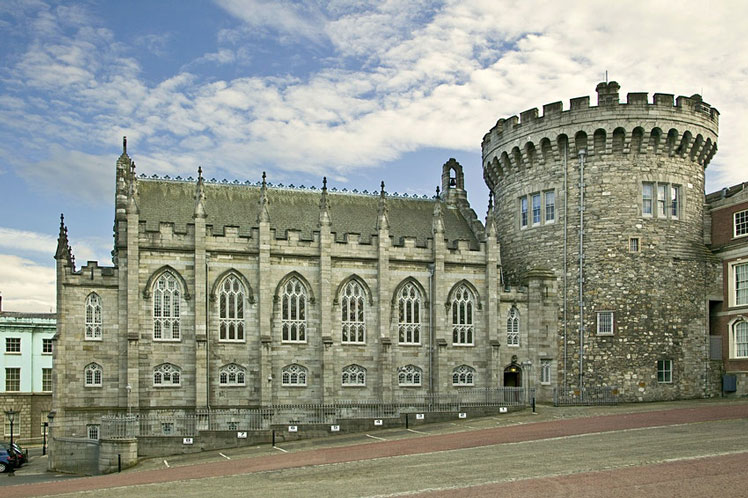
Dublin Castle dates back to 1204 © german-images/Getty Images
Dublin Castle was the stronghold of British power in Ireland for more than 700 years, beginning with the Anglo-Norman fortress commissioned by King John in 1204. The castle was officially handed over to Michael Collins, representing the Irish Free State, in 1922.
Only the Record Tower (1258) survives from the original building, as most of what remains now was built from the 18th century onwards. The castle is now used by the Irish government for meetings and functions, and tours take in the State Apartments and St Patrick's Hall, where Irish presidents are inaugurated and foreign dignitaries toasted. The castle is home to the world-famous Chester Beatty Library.
3. Cahir Castle
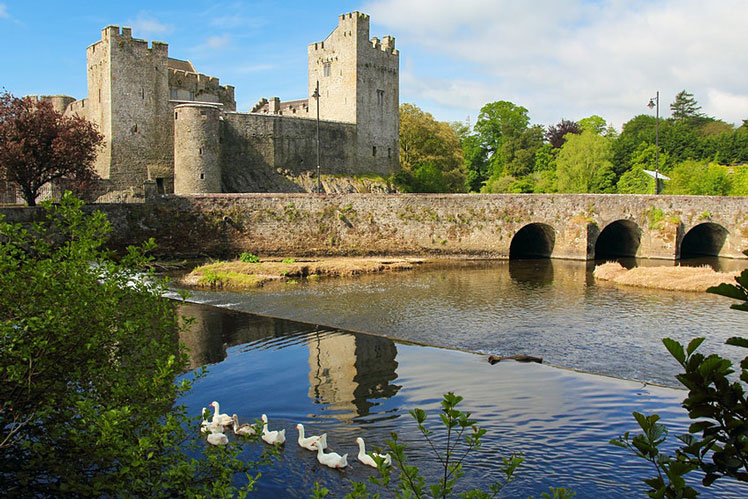
Cahir Castle in Tipperary dates back to 1142 © Captblack76/Shutterstock
Cahir Castle in Tipperary enjoys a riverside site with massive walls, a moat, turrets, towers and keep, mullioned windows, original fireplaces and a dungeon. Founded in 1142 and passed to the Butler family in 1375, it's one of Ireland's largest castles.
In 1599, the Earl of Essex shattered its walls with cannon fire. The castle, originally built to protect a salmon fishery and important river crossing, eventually surrendered to Cromwell in 1650 without a struggle. It is largely intact and still formidable. It was restored in the 1840s and again in the 1960s when it came under state ownership.
4. Dunguaire Castle
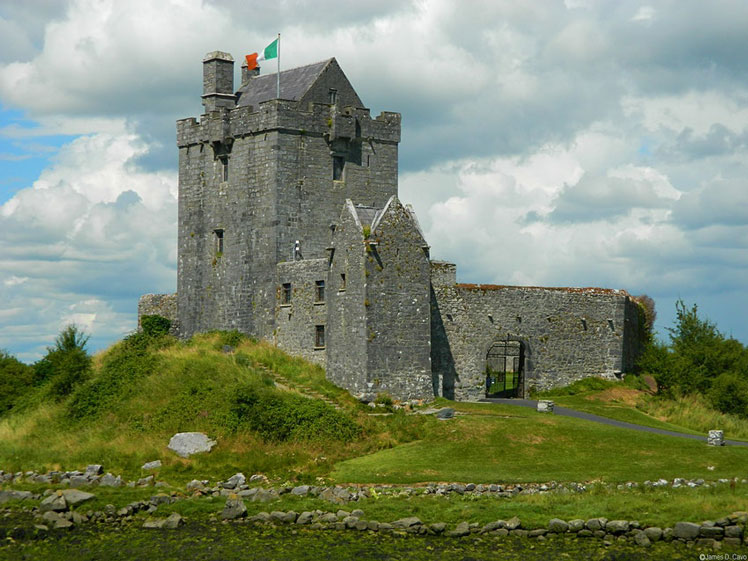
Dunguaire Castle dates back to 1520 © jdcavo/Budget Travel
Dunguaire Castle in Tipperary is a chess-piece style castle erected around 1520 by the O’Hynes clan. It sits on the fringes of Kinvara on the former site of the 6th century royal palace of Guaire Aidhne, the king of Connaught. The castle passed into the hands of the Martyns of Galway in the early 17th century. Dunguaire was bought and renovated by Oliver St. John Gogarty, the famous surgeon and literary figure, in 1924.
It became the venue for meetings of the literary revivalists such as W.B. Yeats, his patron Lady Gregory, George Bernard Shaw, Edward Martin and J.M. Synge. In 1954, the castle was acquired by Christabel, Lady Ampthil, who completed the restoration started by Gogarty after buying it for the equivalent of €500 ($586). She lived there from the 1950s to the 1970s, and the castle is now the property of Shannon Heritage.
5. Rock of Cashel
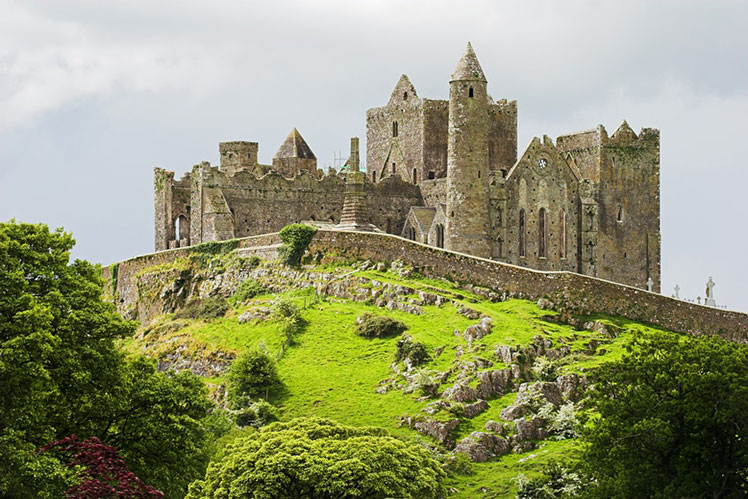
The Rock of Cashel is an ancient fortified home of kings © Pierre Leclerc/Shutterstock
The Rock of Cashel in Tipperary is an ancient fortified home of kings and one of Ireland's most spectacular historic sites. Sturdy walls circle an enclosure containing a round tower and a 13th century Gothic cathedral. The undoubted highlight is the early-12th-century Cormac's Chapel, an exquisite gem of Romanesque architecture with beautifully carved doorways and the precious remains of colorful wall paintings.
In the 4th century, it was chosen as a base by the Eóghanachta clan from Wales, later known as the MacCarthys, who lost possession to the O'Brien tribe under Brian Ború's leadership. In 1101, King Muircheartach O'Brien presented the Rock to the Church to curry favour with the powerful bishops and to end secular rivalry over possession of the Rock with the Eóghanachta. It's a five-minute stroll from the town centre up to the Rock, from where fantastic view over the Tipperary countryside can be enjoyed.
6. St John's Castle
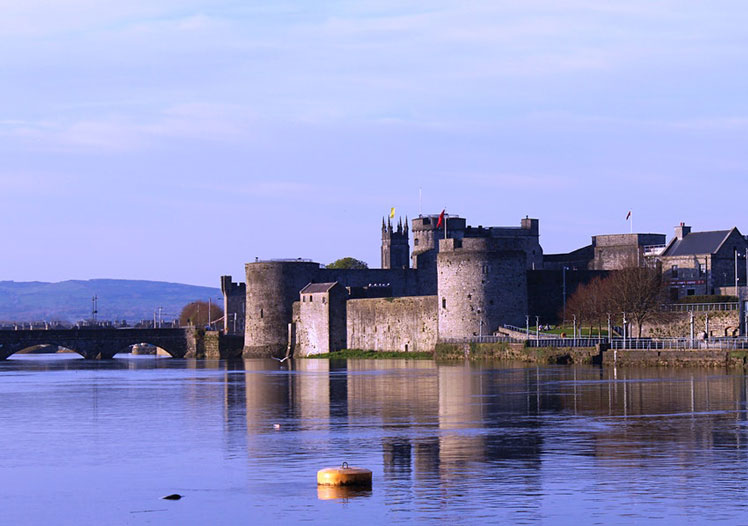
King John's Castle is one of the best-preserved Norman castles in Europe © Vic O'Sullivan/Lonely Planet
King John's Castle in Limerick was built on the orders of King John of England between 1200 and 1212. It is considered to be one of the best-preserved Norman castles in Europe. Its massive twin gate towers still stand to their full height, and the armoury and its contents remain as evidence of the castle's turbulent history.
Limerick’s showcase castle is best viewed from the west bank of the River Shannon. The site on which the castle stands has been occupied for over 1000 years, and a number of houses believed to be Viking in origin were unearthed during earlier restorations of the castle. Elements of these dwellings and some artefacts found on site can be seen at King John's Castle visitors' centre.
7. Blarney Castle
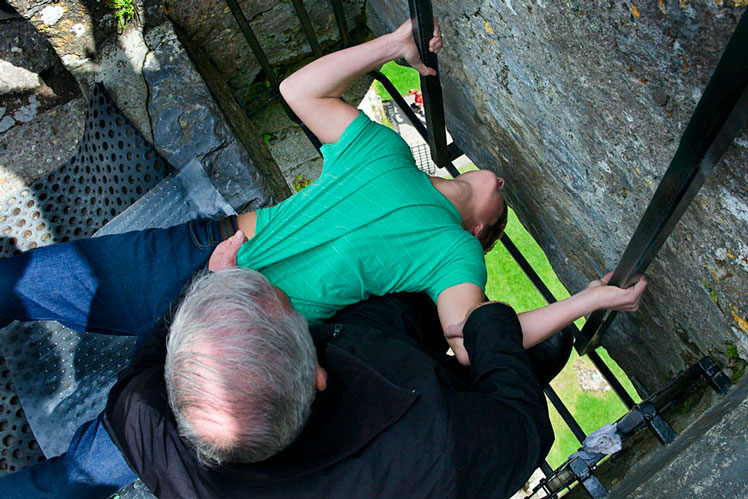
A visitor kissing the Blarney Stone © Reed Kaestner/Getty Images
Blarney Castle in Cork is a 16th-century tower set in gorgeous grounds, popular for its Fern Garden, Arboretum, Poison Garden and Rock Close. While the site dates back to the 10th century, the castle seen today was built by Lady Colthurst in 1874.
Crowds flock to the castle to kiss the Blarney Stone, which is said to be a former altar stone brought back from the Crusades. One of Ireland’s most popular tourist attractions, it is rumored to grant “the gift of the gab” to those who kiss it. In these virus-conscious times, an eco-friendly, World Health Organization-approved cleanser is used to clean the stone after each kiss.
8. Ross Castle
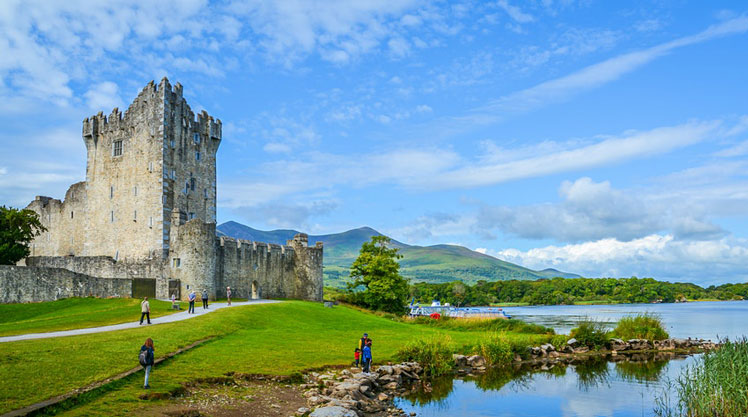
Ross Castle sits on the edge of Killarney’s lower lake © Stefano_Valeri/Shutterstock
Ross Castle in Kerry dates to the 15th century, when it was a residence of the O'Donoghue family. It was the last stronghold in Munster to hold out against Cromwell, and was eventually taken by General Ludlow in 1652. It sits on the edge of Killarney’s lower lake and came into the hands of the Brownes who became the Earls of Kenmare. They owned an extensive portion of the lands that are now part of Killarney National Park.
Legend has it that O’Donoghue still exists in a deep slumber under the waters of Lough Leane, and he rises and circles the lake on his white horse on the first morning of May every seven years. Anyone catching sight of him is said to be assured of good fortune for the rest of their lives. The large rock at the entrance to the bay is known as O’Donoghue’s prison.
9. Trim Castle
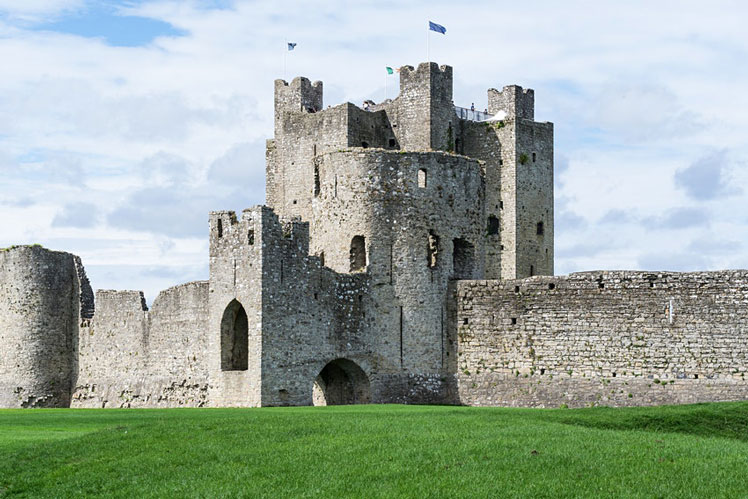
Trim Castle was founded by Hugh de Lacy in 1173 © Niall_Majury/Getty Images
Trim Castle in Trim was Ireland's largest Anglo-Norman fortification, and was founded by Hugh de Lacy in 1173 and destroyed by Ruaidrí Ua Conchobair, Ireland's last high king, within a year. The building seen today was begun around 1200 and has hardly been modified since.
By the 16th century, the castle had begun to fall into decline and in 1649, when the town was taken by Cromwellian forces, it was severely damaged. The castle's grassy two-hectare enclosure is dominated by a massive stone keep, mounted on a Norman motte. It briefly returned to its former glory in 1996 as a location for Mel Gibson’s Braveheart, where it was the setting for Edinburgh Castle, York Castle and the Tower of London.
10. Ashford Castle
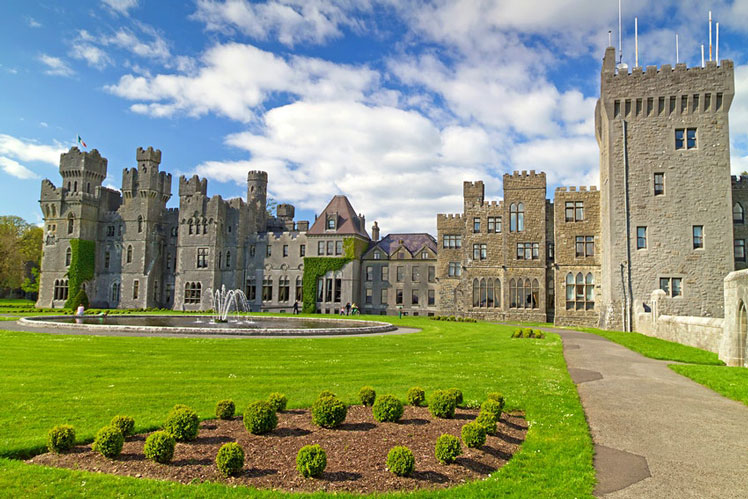
The Quiet Man was filmed at Ashford Castle in Mayo © Mustang_79/Getty Images
Ashford Castle in Mayo was once owned by the Guinness family of stout fame. Located along the Wild Atlantic Way, the castle was built on the perimeter of a monastic site in 1228 by the Anglo-Norman de Burgos family on a 350-acre estate on the shores of Lough Corrib.
It has had various owners over the centuries, including the Bingham, Browne and Guinness families, and various additions have been made to the buildings and grounds. John Ford's famous film, The Quiet Man, starring John Wayne and Maureen O'Hara was shot on the grounds and in nearby Cong in 1959, and many of the stars stayed at the castle. Now a five-star luxury hotel, it was the setting for golfer Rory McIlroy's marriage to Erica Stoll.
11. Donegal Castle
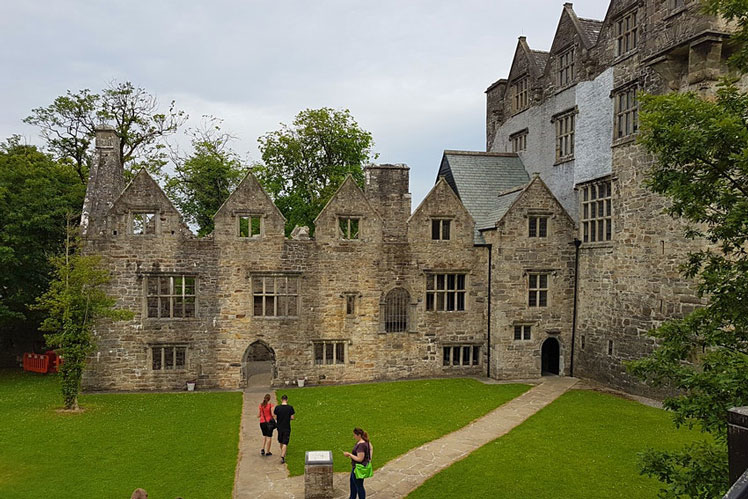
Donegal Castle was built in 1474 © Fáilte Ireland & Office of Public Works
Donegal Castle guards a picturesque bend of the River Esque in Donegal. It was built by the O'Donnells in 1474, and served as the seat of their formidable power until 1607. The castle was rebuilt in 1623 by Sir Basil Brooke, along with the adjacent three-storey Jacobean house.
The building complex fell into ruin in the 20th century, and was further restored in the 1990s. Highlights include the magnificent upstairs Great Hall with its vast and ornate fireplace, French tapestries and Persian rugs.

